
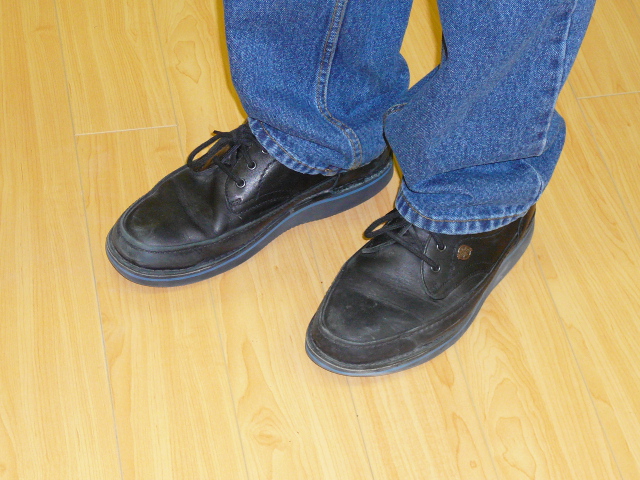
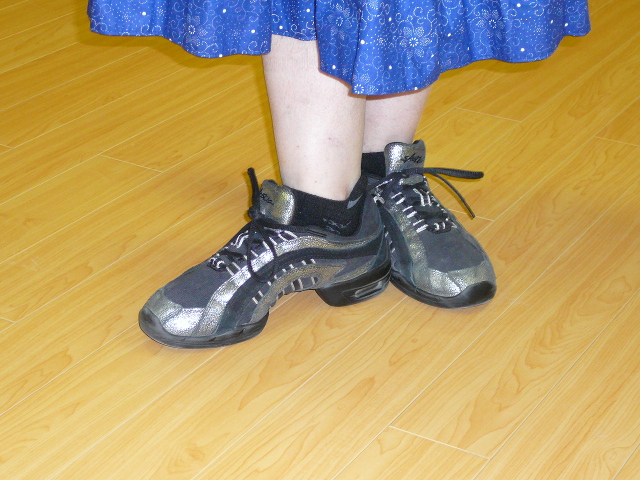
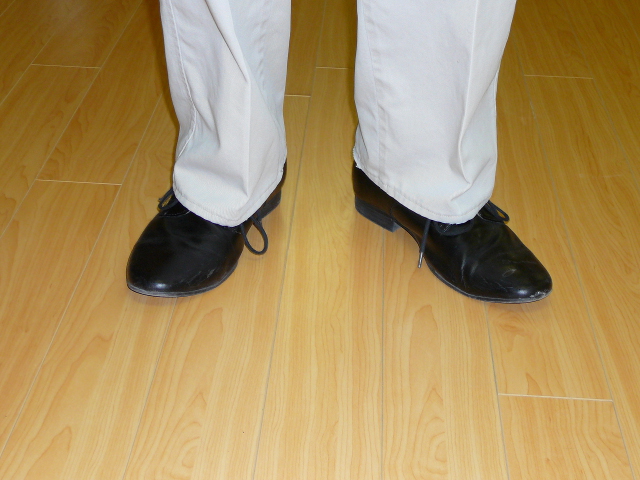
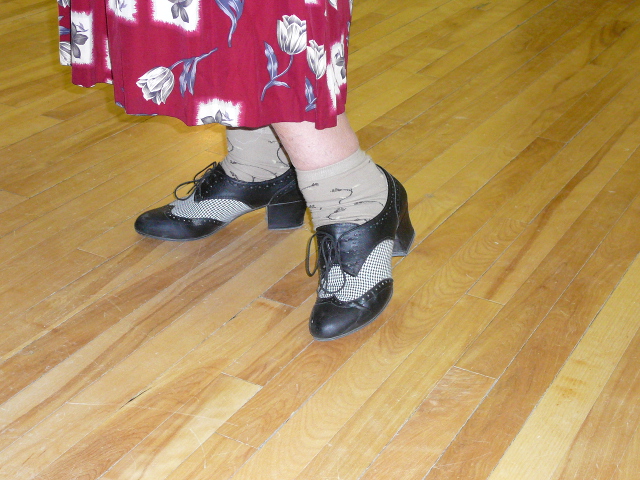
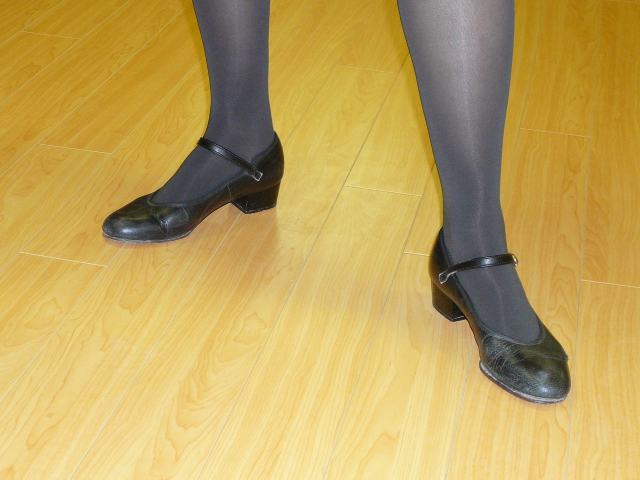
We are lucky to have a wonderful floor to dance on! Maintaining such a floor is costly, and the administrator of St.Barnabas has asked us to respect their shoe policy, which is that no street shoes may be worn in the dance hall. Please bring your shoes to the dance instead of wearing them there.
What shoes can I wear?
Any wide-heeled, soft-soled shoes are fine. Running shoes will do. Short heels or flats are recommended.
If you are a newcomer, we will help you brush the grit off your street shoes at the door. If you decide you would like to dance regularly, you can reserve your runners for that purpose alone, or buy a pair of dancing shoes. Ask one of the TCD organizers about this: dance shoes don't have to be expensive, and they last a long time.
Why?
Any type of dance involving shoes is tough on dance floors. When we dance, we are grinding tiny bits of dirt and grit right into the floor. This damage is even worse when turning or spinning is involved -- and contra dance involves plenty of that! Also, hard-soled, leather shoes can leave scuffs all over the surface, and very narrow heels (less than 1.25 cm or 1/2 inch in diameter) can actually dent the floor.
Here's how to check your shoes:
To tell what kind of soles your shoes have, try pressing them with your thumbnail. You should be able to make a dent. If you can't, the shoes are too hard for our floor. The heels should be at least 1.5 inches in diameter and made of a non-marking material. You can check this by scraping the edge of the heel on a piece of white paper. If it leaves a black mark that can't be rubbed out, leave them at home.
Dance Shoes
What to Wear on Your Feet for Contra Dance
There is a huge variety of shoes that are worn for contradance, and much depends upon the preference of the wearer. The only real guideline is that you need shoes which are not worn outside. "No street shoes on the dance floor" is a sign you will read at every contra dance you attend. Street shoes tend to accumulate wetness, dirt and small stones that can damage the dance floor and pose slip and fall safety issues for other dancers.
Dance shoes are built specifically for dancing and they offer the support the foot needs to handle the stresses and repetitive movements involved. While some people dance in bare feet, most of us are much more comfortable wearing shoes that give good support and cushion the ball of the foot from repeated impacts. Most of the time, we are dancing on a very good sprung wood dance floor, however, even a great floor involves impact. Good shoes are simply a good idea. They let us dance longer, and without stress or injury.
Some contra dancers purchase dance shoes from dance wear supply stores. Ballroom shoes, hip-hop shoes, salsa shoes, Scottish dance slippers, and dance sneakers are all appropriate. Dance shoes usually come with either leather or suede soles, which allow the dancer to easily spin and glide. Dance sneakers have soles made from especially designed man-made materials, with spin spots under the ball of the foot.
Some contra dancers elect to dance in a pair of running shoes that they save especially for dancing. If the sole of the shoe has too much grip on the floor and not enough glide, a cobbler can install a smooth leather sole right over the treads.
A Google search of 'dance shoes in Toronto' will give you hundreds of places to buy shoes, including Malabar Toronto, Century Wide Dance Shoes, Dancewear Centre, Natural Spin Dance Shoes, Helen's Dancing Shoes and Danceshoppe. Some of us brave the world of online dance shoe shopping: dancewearsolutions.com offers great variety but do beware, the sizing of many brands of dance shoes is not the same as in street shoes.
Have fun shopping for dance shoes that fit your feet well and allow you to be safe and comfortable on the dance floor. Your feet will thank you for years to come.
Thank you!
Your co-operation means that we will be welcome to continue dancing at St. Barnabas.
